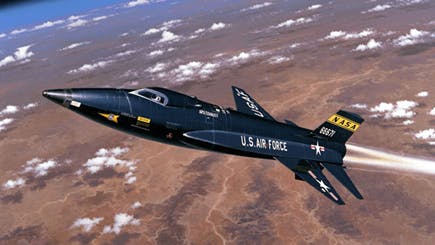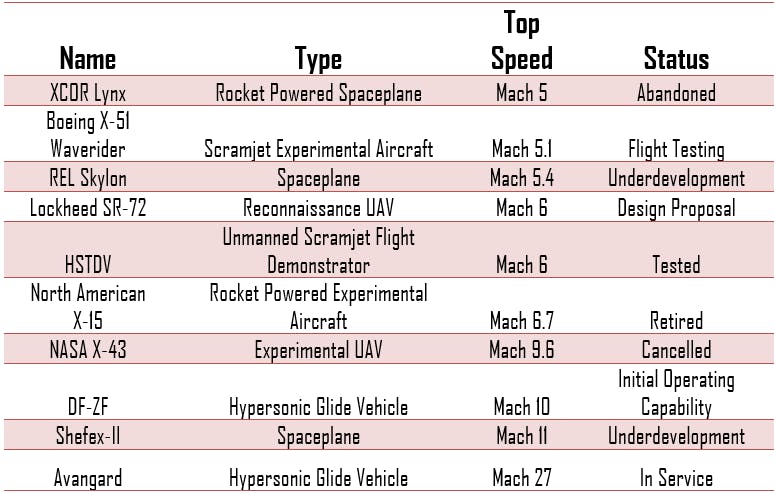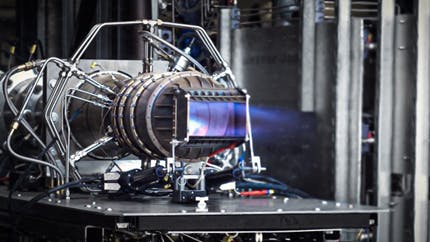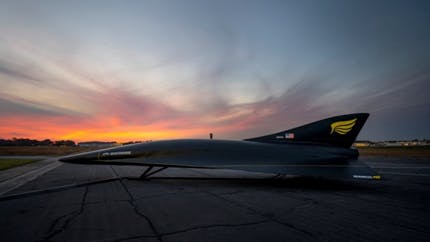“You could have a dinner reservation across the country and come back home — in the same amount of time right now it takes you to drive across town to pick up your kids." ~ Chris Combs
Hypersonic travel is what Chris Combs is referring to. Let's take a look at high-speed travel before moving on to hypersonics. So, almost two decades after Concorde's decommissioning, interest in high-speed travel is growing, and various high-speed projects are being pursued. United Airlines has already announced the return of supersonic travel by 2029, in collaboration with Boom Aerospace. Supersonic travel occurs at speeds ranging from Mach 2 to Mach 3 (2 to 3 times the speed of sound). But what if you could travel at Mach 5? Hypersonic jets are the means through which speeds of Mach 5 or greater can be attained. When compared to current jets, these hypersonic jets reduce travel time by 75 per cent.
So, what's stopping the pilots from simply accelerating the planes to Mach 5?
Before jumping into hypersonic planes it is essential to understand what it takes to travel at such high speeds.
High temperatures are always an uninvited guest when attempting to achieve any superlative degree. As the sound barrier is broken, shockwaves (a type of propagating disturbance that moves faster than the local speed of sound in the medium forms) compress the surrounding air molecules, generating heat. Subsonic planes don't have to deal with as much heat because shockwaves aren't generated at low speeds. This effect is prominent when travelling faster than the speed of sound and significantly affects the plane at Mach 5. The role of material in such a scenario becomes critical because it is the first surface in contact with external heat.
Hypersonic jets must fly at least 50,000 feet above the ground, where they experience the pressure of about 700 pounds per square inch – the same as an elephant standing on a human foot. Because hypersonic jets fly at such high altitudes, their design and analysis must be precise. As a result, low-density density effects become more important for hypersonic planes, as a large portion of their cruise time will be spent at high altitudes. At such a high altitude and speed, the shock wave generated deflects the air away from the stagnation point (a point around which local air velocity is zero) and isolates the body from the surrounding air, reducing the plane's lift capacity.
The boundary layer is formed by flowing fluid in contact with the surface, and its thickness is proportional to the square of the Mach number. It is especially noticeable in hypersonics due to the high Mach numbers. This layer contributes to high skin friction, which increases heat losses.
The physics is only the beginning, and as intimidating as it may appear, the journey from the first hypersonic jet to the current status of these jets is nothing short of a roller coaster ride.
In 1952, NACA proposed working with North American Aviation to develop the X-15, which was the first step toward hypersonic flight. Before it was retired in 1968, a dozen pilots flew the X-15 199 times. The cold war ushered in a space race that left no room for hypersonic development, and the development of rockets supplanted the development of hypersonic aircraft. Despite the lack of support for hypersonic development, the concept of high-speed air travel never lost steam. Scientists were initially successful in developing supersonic jets such as the SR-71 Blackbird and Concorde, but the Mach 5 threshold seemed far away.
 Figure 1: North American X-15
Figure 1: North American X-15
Although hypersonic flight has come into the limelight recently, scientists have been working on it for decades. Many of these planes have been developed as a result of their efforts.

Highlighting the fact that X-15 achieved Mach 6.7 in 1967, the progress has been slow since then. The main reasons have been technical difficulties and the high cost of a single hypersonic flight. All successful aircrafts developed to date have been rocket-powered planes or spaceplanes, requiring other vehicles to launch them.
The X-43 A achieved Mach 9.6 in November 2004, breaking the previous speed record of Mach 7 set in a previous test flight. Rather than an on-board rocket-powered engine, the X-43 A used a scramjet engine, which was an air-breathing engine. Despite the fact that it was cancelled, it provided a glimpse of possible hypersonic air travel.
The challenges of having an independent hypersonic flight are being addressed by a hybrid of turbojet engine and ramjet engine; known as TBCC (Turbine Based Combined Cycle) engine. The TBCC engine operates as a turbojet until it reaches Mach 3, compressing the air to produce thrust. The engine components reassemble into a static ramjet that can operate at speeds ranging from Mach 3 to Mach 6. There's no need to compress the air above Mach 3 because it will compress itself as it enters the engine, simply by slowing down. The TBCC engine is a significant step towards enduring hypersonic flight. Many companies, including Boeing and Lockheed Martin, are working on a TBCC engine for smaller planes that could be scaled up for passenger planes.
The Lockheed Martin SR-72, also known as the "Son of the Blackbird", is proposed to be an unmanned, hypersonic and reusable, reconnaissance, surveillance, and strike aircraft. Scheduled for a test flight in 2025, SR-72 is expected to travel at Mach 6.
Chinese scientists are working on a 45-metre long hypersonic airliner based on the Boeing Manta X-47C that can carry 10 passengers. Officials hope to build a fleet of such aircrafts by 2035 and to increase its capacity to 100 passengers by 2045.
India's entry into the hypersonic domain has been announced by the Hypersonic Technology Demonstrator Vehicle (HSTDV). This scramjet aircraft is being developed by the Defence Research and Development Organisation and is expected to fly for 20 seconds.
Out of all companies, very few have been working on the development of hypersonic jets for passenger travel. Hermeus, an Atlanta-based start-up backed by NASA and USAF, is one of these companies that hopes to test fly a passenger hypersonic jet before the end of the decade in 2029. The company has developed its own TBCC engine, dubbed Chimera, which will be tested with Quarterhorse, a small autonomous aircraft. The main objectives of Quarterhorse would be to reach Mach 5 and demonstrate the aircraft's reusability. Hermeus' business plan calls for a 20-seater jet, that caters primarily to business and first-class passengers. The flight would have a range of 4600 miles, which would be sufficient for transatlantic but not transpacific routes. Routes above land are out of question due to sonic booms caused by breaking of sound barrier.
 Figure 2: Chimera
Figure 2: Chimera
 Figure 3: Quarterhorse
Figure 3: Quarterhorse
Although Hermeus has succeeded in developing a hypersonic flight engine, there are a slew of other issues that aren't being addressed. Quarterhorse would necessitate a sustainable fuel, as it would consume far more than the current jets. The fuselage would have to be able to withstand high temperatures. For comparison, the Concorde, which flew at less than half the speed of Quarterhorse, was constrained by temperature, as even the inner structures heated up at the end of the flight.
If the claims of these companies are taken at face value, and at the current rate of development, there is a very good chance that what Chris Combs stated will become a reality by the mid-2030s. Engineers are scrambling for ways to make the next great leap in air travel, given the obvious benefits of hypersonics and its potential applications. And who knows, maybe in the future, the time it takes to travel from Tokyo to Los Angeles will be less than "3 hours"!
Researched and Written by Darshit Desai and Pooja Rao, Technical Members, SAE Phoenix Aero.

